A Cloud of Coal Mine Dust over a West Virginia Community Points to Regulatory Shortcomings
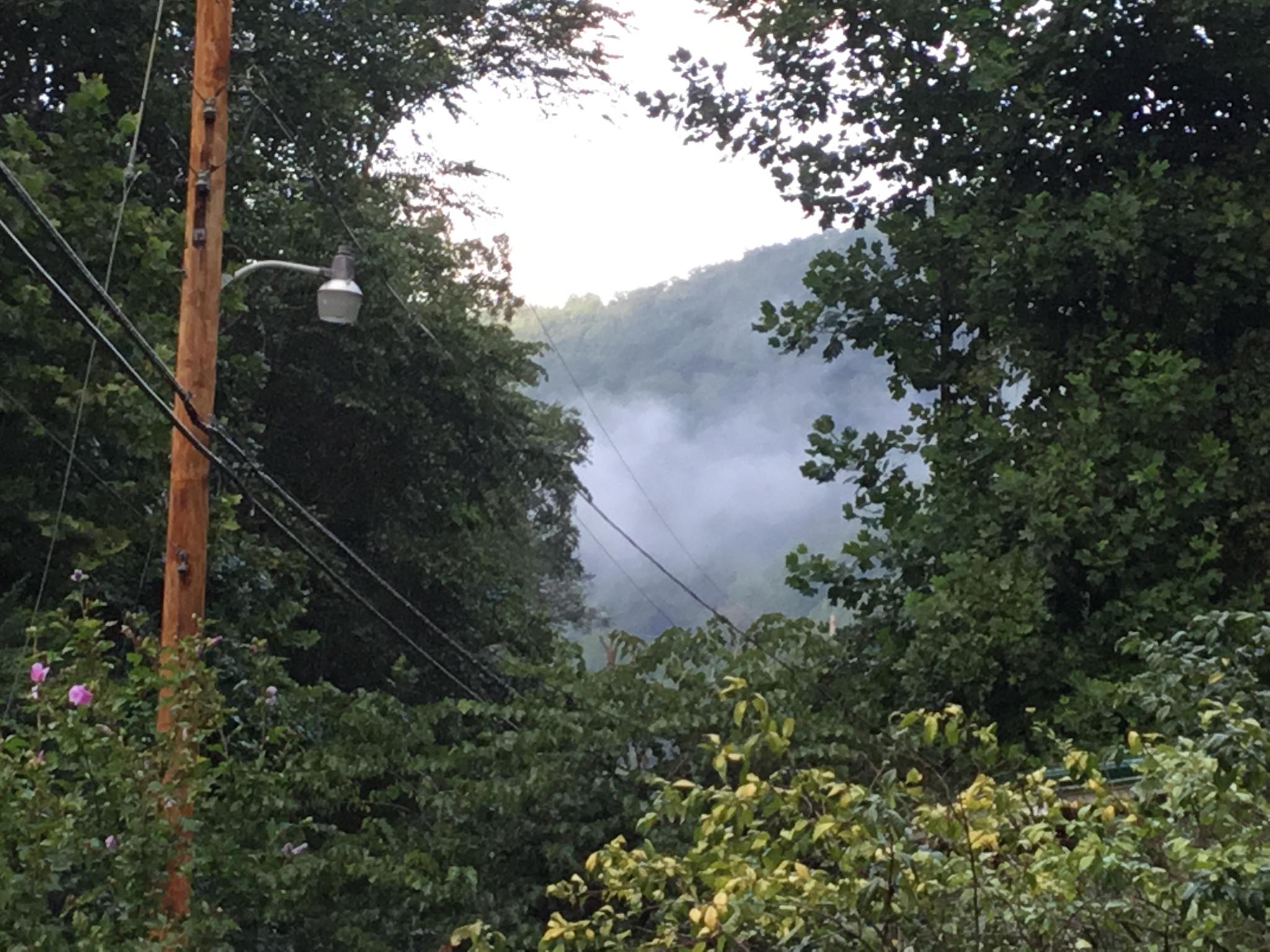
Clouds of coal mine dust intrude into the lives of residents of Eunice, West Virginia, as particulate matter from the nearby Black Eagle Deep Mine operated by Alpha Metallurgical Resources blows off the mine and into the community. Photo by Shelia Walk
By Willie Dodson, Appalachian Voices Central Appalachian Field Coordinator
“I’ve lived in this same house for 30-some years and I never had this problem before the mines came in over here,” says Rick Jones of Eunice, West Virginia.
Eunice is a tiny community in the Coal River Valley about an hour northwest of Beckley. From Jones’ back porch, he can see a portal, stockpile area, and other components of the Black Eagle Deep Mine, an underground coal mine operated by Alpha Metallurgical Resources. Along with many of his neighbors, Jones is upset about the dust that blows off the mine and into his community.
“You can’t keep nothing clean around here,” Jones says. “That’s for sure.”
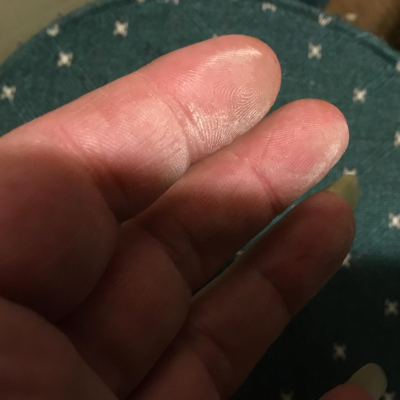
A film of coal and rock dust settles on surfaces inside nearby homes like that of Rick and Anita Jones. Photo courtesy of Rick and Anita Jones.
Beyond the nuisance of dust and noise, residents of Eunice are concerned about the short- and long-term health impacts of living in the shadow of Alpha Metallurigcal’s Black Eagle Mine. They have been unsatisfied with the responses of state regulators. And an ongoing federal update of national air pollution limits, though crucial on a national scale, may mean little for mining communities like Eunice.
Shortly after the mine opened in 2018, Jones noticed what looked like dusty black cobwebs forming on picture frames and other surfaces inside his house. He went so far as to replace his furnace in hopes that the upgrade would better filter out the dust, but he says that didn’t help at all.
“Now I just clean the filter every month and change it out every two months,” he says. “It’s just aggravating trying to keep the place clean.”
And then there’s the noise. In 2020, Alpha installed a new motor on a ventilation fan perched on the mountainside just above Eunice. When community members complained to the West Virginia Department of Environmental Protection that the fan caused a constant and extreme commotion, agency representatives explained that they are not responsible for enforcing any noise ordinances, but that they would talk to the company about the problem.
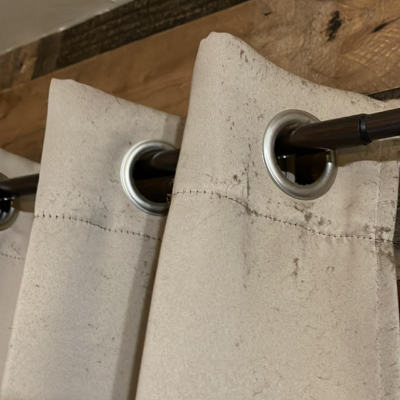
Inside the home of Rick and Anita Jones, black cobwebs form from fugitive coal dust. “You can’t keep nothing clean around here,” Rick says. “That’s for sure.” Photo courtesy of Rick and Anita Jones.
Eventually, Alpha took measures to dampen the noise, and later moved the fan to another location. But this has been a partial solution, at best. No sooner had the fan been moved in April of 2021, than a new round of complaints were filed by individuals residing nearer to the new location.
Shelia Walk lives in the second-to-last house in Eunice going towards the Black Eagle Mine, its stockpile, and the haul road that carries the coal away. She estimates upwards of 350 coal trucks leave the mine each day. The trucks head either to Alpha’s coal processing plant in nearby Marfork Holler, former home of the late activist and community organizer Judy Bonds, or to the coal barges docked at Marmet in the Kanawha River. Beyond the mine traffic, countless coal trucks zoom past Eunice on WV Route 3, Coal River Road, on any given day.
According to multiple Eunice residents, the dust seems to consist of pulverized coal and rock blowing directly off the stockpile and trucks, combined with plain old dirt that becomes caked onto the tires and undercarriages of all those trucks, only to fall off onto the road, and get whipped up into the air with every passing vehicle.
The nuisance posed by all this dust and noise is considerable, but Shelia Walk’s primary concern is the health of herself and her neighbors, who have to live and breathe under a cloud of tiny respirable particles.
“It affects the health and lungs of everyone here,” Walk says. “They don’t care if it’s premature infants, or if you have black lung, like several of the people in the community. They don’t care if you’re on oxygen or if you have asthma. They just don’t care.”
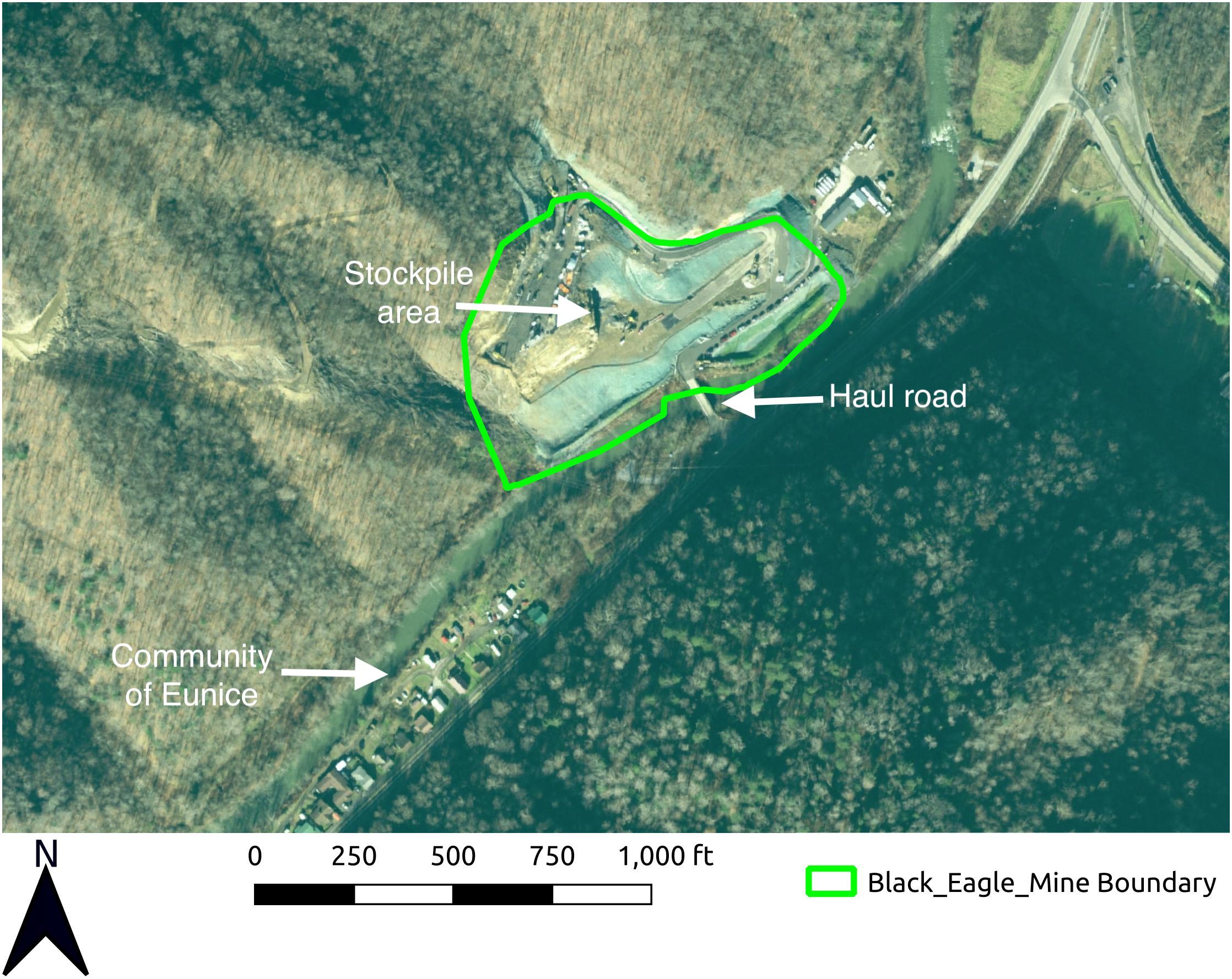
This map shows the proximity of Eunice to the boundary of the Black Eagle Mine and the haul road where hundreds of trucks stir up coal mine dust daily. Map by Matt Hepler
Across the country, communities call for stronger limits on dust
Under the Clean Air Act, the U.S. Environmental Protection Agency sets ambient air quality standards, or targets, for the maximum concentration of various airborne pollutants. One of these pollutants is particulate matter with a diameter equal to or less than 2.5 micrometers, known as PM 2.5. Currently, the PM 2.5 standard is set at an annual average of 12 micrograms per cubic meter.
What is at stake in the upcoming Clean Air Act revision?
The landmark air quality law requires the EPA to set two different standards, or targets, for six specific air pollutants. These are carbon monoxide, nitrogen dioxide, sulfur dioxide, ozone, lead and particulate matter. For each of these, EPA establishes primary standards, which are intended to protect human health and secondary standards, which are designed to limit impacts to the environment and the general welfare.
Attainment of these standards is determined by averages of both daily and annual data. For particulate matter, these standards are further divided into PM 2.5 and PM 10.
The EPA is currently reviewing the effectiveness of ozone primary and secondary standards as well as standards for both PM 2.5 and PM 10.
But this 12 micrograms target is a concern for public health advocates, as research demonstrates a clear link between PM 2.5 and negative health outcomes at levels well below the target set by the EPA.
The EPA is required to update ambient air quality standards at regular intervals, based on the latest available scientific evidence of their effectiveness.
“The current standard was established in 2012 using research from maybe 2005 to 2010,” says Matt Mehalik, Director of the Breathe Project, an umbrella organization coordinating around 50 organizations concerned with air quality in Pennsylvania. “We are now 15 years or so past that, and updated public health research is clear that improving the standard will lessen harms on people.”
An update to the particulate matter rule was due under the Trump administration. At that time, the EPA issued a particulate matter rule that retained the existing standards. That process was viewed as illegitimate by legal experts and public health advocates, who accused then EPA administrator and former coal lobbyist Andrew Wheeler of disregarding relevant science.
“In 2020, the EPA’s scientific advisory council was likely recommending a level of 9 to 10 micrograms per cubic meter,” explains Mehalik. “This was very strongly backed by the American Lung Association, state public health agencies, doctors’ organizations, the American Heart Association and so on.”
Mehalik continues, “But Andrew Wheeler inserted himself directly into the process, dismissed the evidence from EPA staff, sidelined the scientific voices, disrupted the scientific advisory committee, and then, despite thousands of public comments, essentially made the decision to keep the standard at 12.”
Adding insult to injury for West Virginians living with poor air quality, Wheeler announced this decision alongside Governor Jim Justice and other West Virginia politicians who lauded the move.

This map indicates the locations of West Virginia air quality monitoring devices compared to the Black Eagle Deep Mine and other coal mine permits. Map by Matt Hepler
It was only after the American Lung Association and 10 other organizations sued the EPA for failing to properly review the effectiveness of the PM 2.5 rule, and after President Biden appointed former North Carolina regulator Michael Regan to replace Wheeler as the head of the EPA, that the agency agreed to reconsider air quality standards in light of the most current science. That process is now underway, with the agency expecting to propose an update to the particulate matter standard this summer, and finalize the rule in the spring of 2023.
According to Mehalik, scientific consensus holds that this limit should be reasonably lowered to 8 micrograms per cubic meter, with some evidence suggesting that a limit of 6 micrograms per cubic meter would be even more protective of public health. The World Health Organization set its limit to 5 micrograms per cubic meter last year based on its review of health evidence.
On March 4, the EPA’s scientific advisors completed their literature review and recommendation process, advising that the agency lower the PM standard to somewhere between 8 and 10 micrograms per cubic meter.
Does the Clean Air Act matter in mining communities?
While research affirms that changing the PM2.5 standard from 12 to 8 micrograms per cubic meter would have a positive effect on public health on a national level, it is unlikely that this change would improve conditions for the residents of Eunice, West Virginia, at least in the near term. This is due to nuances in how the Clean Air Act works, as well as the vagueness of mining permits.
“The Clean Air Act is not designed to work quickly. It’s designed to work over time to allow industries to install technologies that reduce pollution,” Matt Mehalik of Breathe Project explains. “Emissions go down over a 5- to 10-year time frame. But it often doesn’t help very much in very short-term exposures or spikes in pollution, unless they average out above a limit of 35 micrograms per cubic meter over 24 hours (midnight-to-midnight), which often is not the case for pollution spike events.”
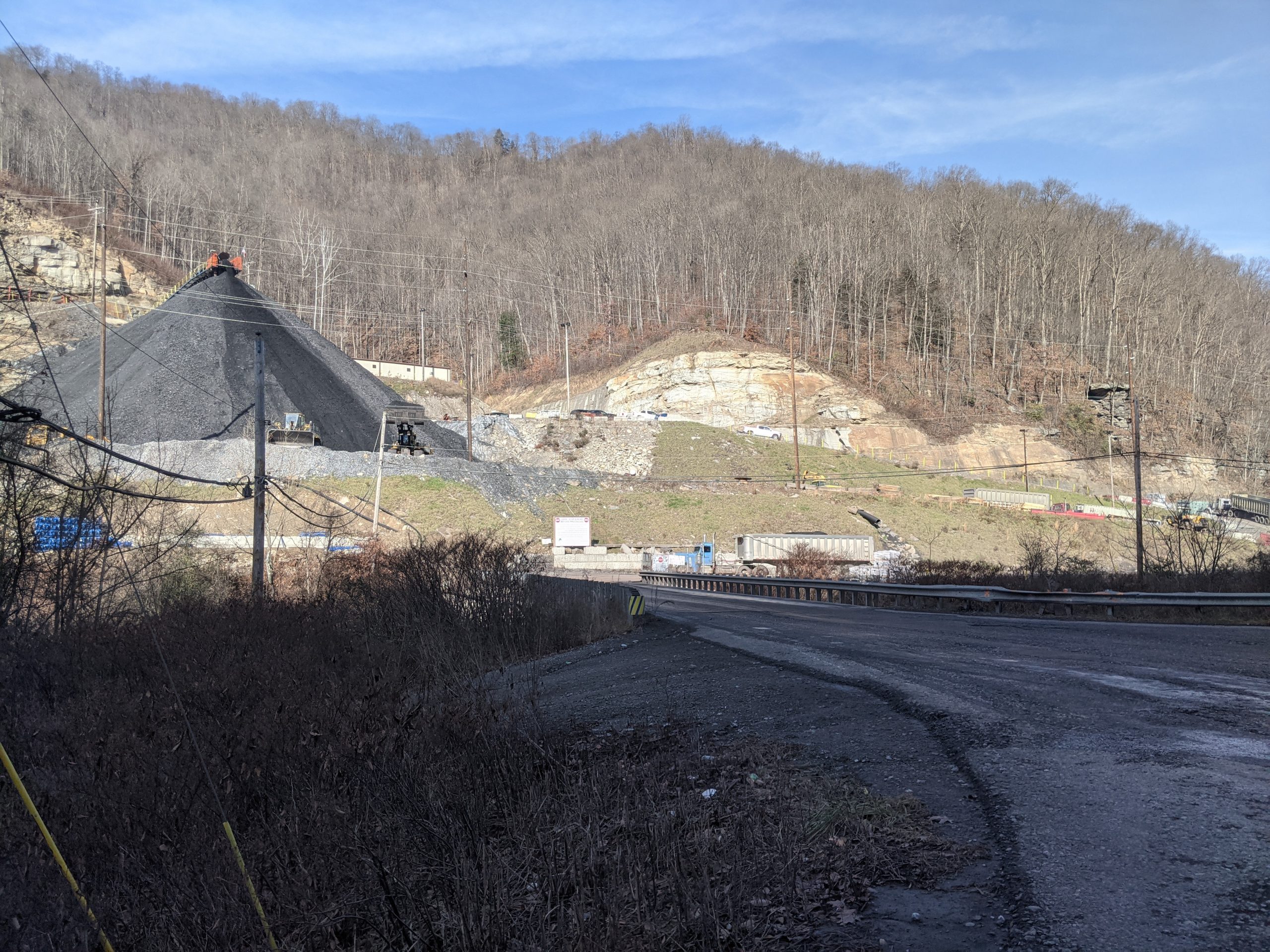
The stockpile area at the Black Eagle Deep Mine sits just a few hundred feet from the heavily traveled haul road used to transport coal away from the site. Photo by Willie Dodson
Under the Clean Air Act, ambient air standards do not apply to specific facilities, but instead serve as benchmarks for ambient air quality across multiple communities and vast geographies. The EPA and state regulators rely on a series of air quality monitoring stations situated across the country in order to determine attainment or nonattainment of these benchmarks. In West Virginia, there are 13 monitoring stations that measure PM2.5 for the entire state. None of these are located south of Charleston, where the mining industry is most concentrated.
Industrial facilities that are expected to emit significant airborne pollution are required to obtain special permits that impose hard limits on airborne pollutants like particulate matter, but coal mines are not generally required to obtain this type of permit.
Instead, measures to control dust must be included within a mining permit itself. This language generally describes broad strategies for reducing excessive dust, but lacks any specific requirements or enforceable limits.
According to Terry Fletcher, public information officer for the West Virginia Department of Environmental Protection, compliance with air quality standards at coal mines is based on reviewing the use of equipment designed to reduce dust, such as water sprays, and DEP inspectors’ observations of how clear the air is on-site. Fletcher explains that this involves looking at both specific sources of dust such as belt transfer points and fugitive sources like stockpiles and roadways.
In the case of the Black Eagle Deep Mine, Alpha’s mining permit states that haul roads will be maintained, “so as to: Control or prevent erosion, siltation, and the air pollution attendant to erosion, including road dust as well as dust occurring on other exposed surfaces, by measures such as vegetating, watering, using chemical or other dust suppressants, or otherwise stabilizing all exposed surfaces.”
The absence of specific air quality compliance standards for coal mines means that even the mere acknowledgement of dust problems depends on the diligence and judgment of mine inspectors. In some cases, inspectors issue citations requiring a coal company to resurface a haul road, install a truck wash, or take some other action to mitigate dust. But often, communities find these measures to be inadequate, and to date no such citations have been issued for the Black Eagle Deep Mine.
Local and national organizing for clean air continues
In the spring of 2021, Sheila Walk, Rick Jones and many of their neighbors started holding weekly community meetings. They hoped that together they could pressure the DEP to crack down on the noise and dust, or that the community could bring about some other solution to these problems. The winter weather and the persistence of the COVID pandemic have halted those meetings for now, but Walk says she plans to start gathering with her neighbors again when the weather warms up.
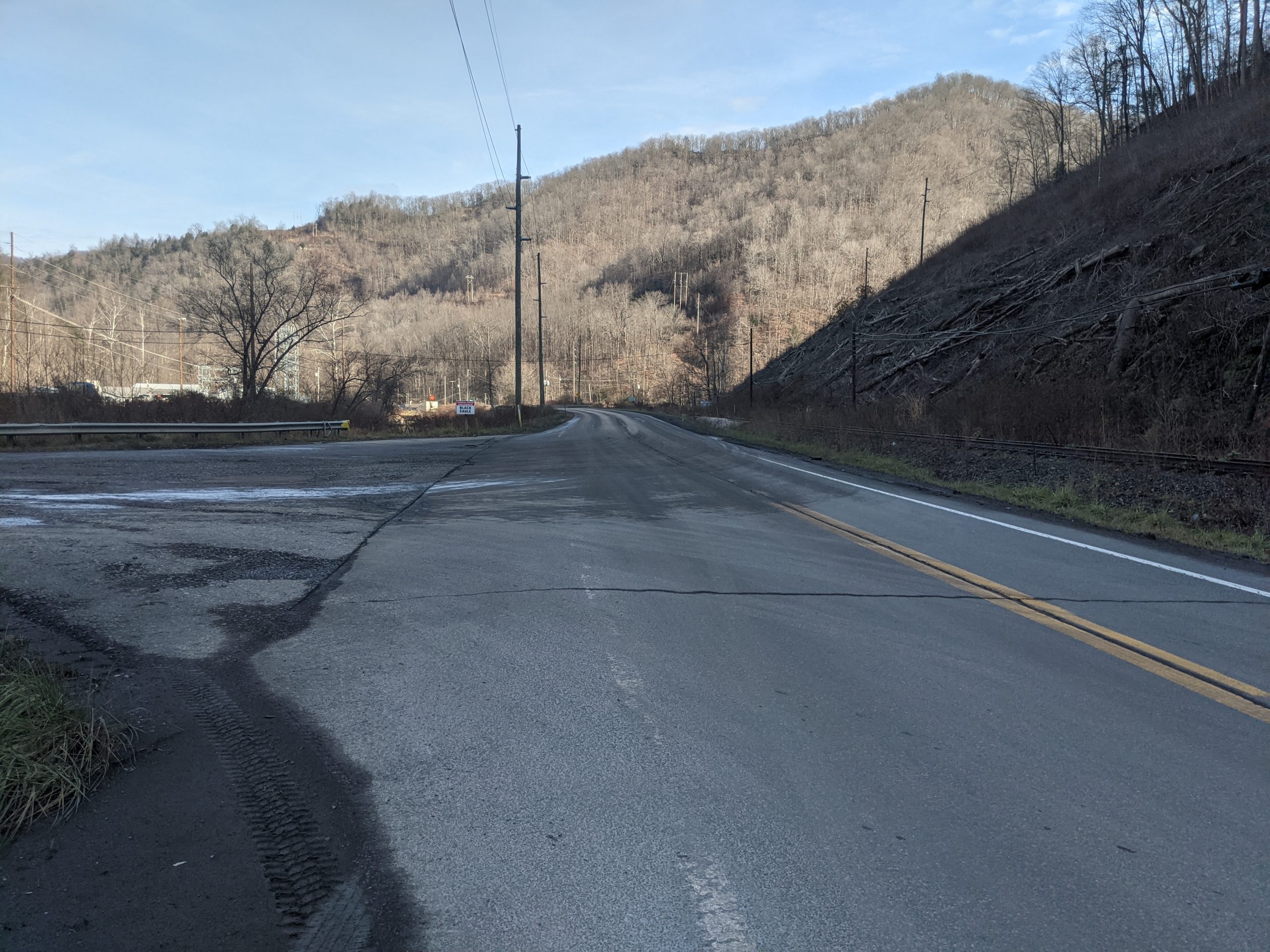
Coal trucks leave the entrance to the haul road for the Black Eagle Deep Mine covered in pulverized coal, rock and dirt. Traffic stirs the matter into dust clouds that menace nearby residents. Photo by Willie Dodson
“We just want [the DEP] to listen to what we have to say. What if it was their parents, great grandchild, grandchild, child, or siblings living here?” says Walk, explaining that she is exasperated with the inability or unwillingness of regulators to bring effective enforcement against the Black Eagle Mine.
“All we want is for the noise and dust to stop, and if they can’t do that, we are at the point they can buy us out, or relocate us away from it,” Walk says.
Rick Jones has arrived at a similar conclusion.
“Maybe they can buy us out and let us find someplace else to live,” says Jones. “But living in this community right here —- it didn’t used to be this way. I know years ago people lived like this in the coal camps, but this is 2022.”
Reflecting on his own upbringing in a heavily industrialized part of Pittsburgh, the Breathe Project’s Mehalik sees many commonalities with coalfield residents who are subjected to clouds of mine dust. Mehalik describes a swath of manufacturing centers and mining communities as “the industrial heartland of Appalachia” where air pollution from various sources leads to “very high rates of cancer, high rates of cardiac disease and respiratory disease, lower than average lifespans, disruptions in families and disruptions in communities.”
“It’s not fair for your family or community to have to bear this burden,” Mehalik says. “Demanding a higher quality of life is not unreasonable at all. In fact, it’s essential and it should be a starting point for how communities function.”
Stay informed about future action opportunities on clean air issues and coal-related health concerns by subscribing to Appalachian Voices’ monthly e-newsletter, The Appalachian Advocate. Sign up here!
Related Articles
Latest News

Leave a comment
Your email address will not be published. Required fields are marked *
One response to “A Cloud of Coal Mine Dust over a West Virginia Community Points to Regulatory Shortcomings”
-
Thank you for your articles about the coal industry; clean air; black lung and more on these subjects. I have lived with the coal, oil and gas industry leases since 1982 when my step-mother passed away, leaving her entire estate to my father. He tried to manage his affairs along with what she had, but because of his ill health he wanted me to ‘take care of it all’ via a Power of Attorney. Part of their properties included over 250 acres in Mingo and Logan counties as well as some outside Naugatuck, West Virginia. There were more properties located in Kentucky that were also under coal, oil and gas leases. Other properties remained untouched, or so I thought. I didn’t know anything about the coal and mineral industry and assumed the companies who had leased lands were above board and honest or at the very minimum, possessed ethical business practices. I could not have been more wrong. Over a short time, I quickly learned that very harsh fact of life. I am still following mining permits being issued and mine locations, but the companies have assigned the leases so many times without my knowledge, I can honestly state I have no idea which company(ies) are operating on the surviving properties. One property in Kentucky (a 16-acre tract) was deep, surface and strip mined with the company extracting over 926,000 tons of coal without having a lease agreement in place. The head of the KY Department of Mines and Minerals at the time, John Heitt, advised me to contact the company to pay, but found they had gone out of business…a practice more common than not so it seems.
One of the worst demonstrations of that business philosophy, was in 2004 or 2005, when there was a mining incident in WV that killed over 20 miners. ICG (International Coal Group) held the lease on that mine as well as on the properties in WV that I was overseeing. Within a few weeks following the mine disaster resulting in deaths, I received notice they were assigning the lease to another company and were filing for bankruptcy. Bankruptcies are common practice with these companies… and when Horizon Natural Resources filed bankruptcy, I was blessed to have to deal with that on top of the AEI, Phoenix Land Company, Zeigler Coal Company bankruptcies. One good thing I discovered in the years that I have been in this position, is that a lawyer who was representing a bankruptcy filing company, stated she would have to get permission from the “powers that be” to get the annual minimum rental for the year to be paid from one of the Grand Cayman Island accounts, which was drawn on the USBank and mailed from Grand Cayman to Quito, Ecuador then to a USBank in Minnesota then to me. Are these companies truly bankrupt??
I wish the state/commonwealth legislators would enact legislation REQUIRING LESSEES TO NOTIFY LESSORS OF UTILIZING OTHER COMPANIES TO DO WHAT THE LESSEE was claiming and MAKING IT ILLEGAL TO APPLY FOR MINING PERMITS ON LANDS FOR WHICH THEY DO NOT HOLD A LEASE! But, I don’t see the day that will happen. For all the coal that has been mined out of Mother Earth, there is more to be taken. Mountains collapse; property becomes classed as “impounded slurry;” ground water and river water is polluted with coal sludge or whatever exists. This opens the door for other companies to come onto the land and then seek to construct solar farms or wind farms or even nuclear plants if there is viable water available to act as a coolant and discharge means. All of this has happened because of the greed and unethical business practices of many and not just in recent years, but going back a century or more.
Thank you for listening/reading. I am almost glad some of the earth’s resources are nearly depleted. What will people do to satisfy their greedy needs when all is gone???





Leave a Comment